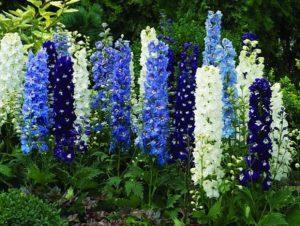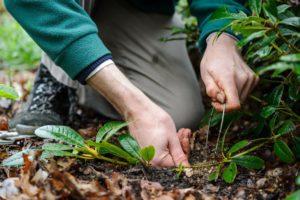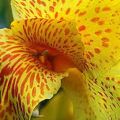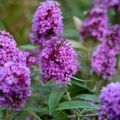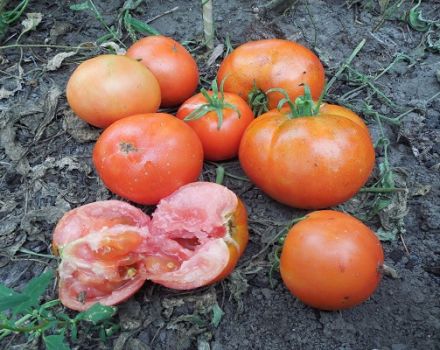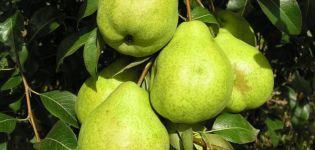Planting and caring for lychnis flower in the open field, description of species
Lychnis is a perennial flower, representative of the carnation family. Translated from Greek, the name sounds like "lamp". Flowers adorn any garden, create a cozy atmosphere in it. Planting lichnis in open ground and caring for the crop is rarely difficult. Even an inexperienced summer resident will cope with it, provided that all recommendations are followed.
Description and characteristics
Lychnis has been cultivated since the 16th century. Perennial bushes are widespread in the northern states. In the CIS countries, only 15 varieties are in demand. Lychnis grows up to 1 meter in height. There are hairs on the stem, the leaves are round, heart-shaped. The flower diameter is 20 mm. They are pinkish, white, bright red, pale yellow and rich apricot. Fruits are multi-roots with kidney-shaped seeds of a dark brown hue, 0.2 cm in diameter. Lychnis is grown in 1 place for up to 5 years.
Breeding from seed through seedlings
Upon completion of the lychnis pollen, you can wait for the ripening of the seed. This happens in the fall, when the inflorescences dry out. If properly conserved, seeds can last for up to 4 years. The first shoots appear in 3 weeks, if the daytime air temperature does not fall below +18. When the shoots have sprouted very close to each other, thinning is done. The procedure ensures the free, full development of the sprouts.
After they get stronger, the first leaves will appear, they are transplanted. Each shoot is planted in a separate hole at a distance of 30 cm from each other, taking into account the further expansion of the bush in breadth.
Landing dates
The seeds are sown directly into the ground from April to July. The air temperature should be kept within 8-12 degrees Celsius. It will bloom next year or even summer. The first inflorescences will not be as dense as later. This is considered the norm.
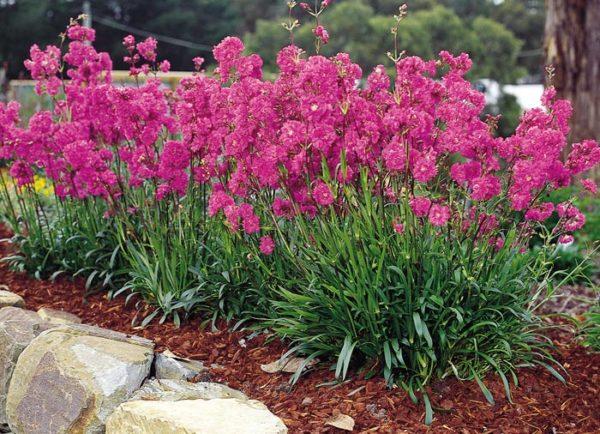
Preparation of planting material
Seedlings can be bought in nurseries, 1-2 years old. There should be no damage or signs of disease on it. Pay attention to the soil in the container to keep it moist. Lichnis seedlings before planting should be lowered into a clay chatterbox. You can add a growth stimulant to the mixture.Keep in solution for about an hour. This will help the rhizome to develop and get stronger faster.
If we are talking about sowing seeds, first sort out the rejected specimens, leaving only healthy ones. Stratification is desirable. The procedure involves placing them in the refrigerator for 2 weeks. Put the seeds in a wet napkin. To speed up the process of their appearance, before sowing, soak in warm water or growth stimulant solution for 5 hours. After, dry thoroughly.
How to plant
Lichnis is planted with seeds or seedlings. To quickly get pollen in the first year, you should resort to the second method. For 1 month, make holes in the chosen place. Their size is determined depending on the diameter of the rhizome.
When planting several plants, observe the optimal distance between them - 20-25 cm.
Pour sand or fine gravel at the bottom of the hole. Carefully place the bush in the recess, sprinkle with soil, compacting it a little with your hands. After, pour abundantly with water, loosen the ground.
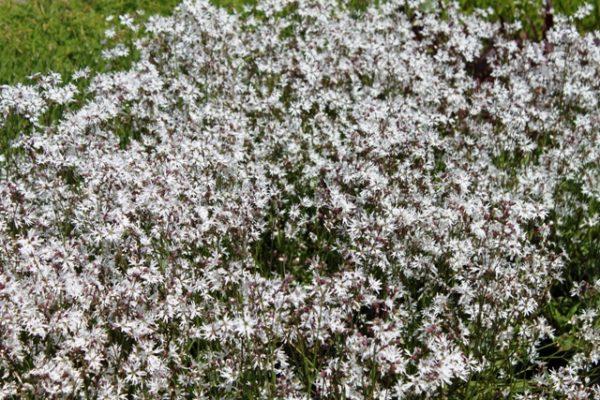
Site selection
Lychnis prefers to grow in a damp, swampy, elevated area where the sun's rays fall. The bushes also thrive in partial shade. High grades are selected a place along house walls or other structures, a fence or a gazebo, along the banks of a pond, a reservoir.
Low varieties take root well in single or group plantings in flower beds, rock gardens. Crown lichen varieties are best placed in light shade.
Soil preparation
Choose a well-drained, light soil. The culture does not tolerate stagnant water. There should be sand in the soil. The earth is preliminarily loosened so that it is saturated with oxygen. Add potassium magnesium, superphosphate, humus to it in advance.
Care
It is simple to care for lichnis, you just need to provide him with timely watering, feeding, loosening, treatment from diseases. In cold regions, the bush will need shelter for the winter.
Watering
Lychnis is a moisture-loving crop, it should be watered as the land dries up. This usually happens once a week. The water must be settled. In summer, flowers need to be irrigated more often, 2 times in 7 days. Watering is carried out in the morning, since the plant actively absorbs moisture in the daytime.

Loosening and weeding
Loosening the soil around the lichnis bush should be 1-2 times a month. Weeding ensures the removal of weeds, saturation of the earth with oxygen. Loosen shallowly, about 5 cm deep. Weed between the rows with a hoe, trying not to touch the bushes.
Removing wilted inflorescences
Dried flowers must be removed. This is necessary so that the plant does not waste extra energy, the bush does not become heavier. Timely excision of wilted inflorescences helps the bush to form new buds faster.
Top dressing
Lychnis is fertilized 3 times a year, before pollen, during and after. The nutrient material used is 10 kg of compost, 50 g of superphosphate and 40 g of potassium magnesium per square meter. These substances are dissolved in 10 liters of water.

Harmful beetles and diseases
Lychnis is able to undergo root rot, leaf spot, rust. Usually, diseases develop with stagnant water in the root system. When the first symptoms of the disease were noticed, treat the affected specimen with fungicides. If the bush has been attacked by aphids, a leafworm, they are taken out with a decoction of tomato or tobacco tops. Pour soap crushed with a grater into the mixture, stir thoroughly. In addition, you can treat the crop with insecticides.
Wintering
The plant does not require shelter for the winter when it comes to middle and southern latitudes. In the north, it is covered after pruning with a layer of spruce branches, peat or dry soil.

Pruning
To preserve the decorative appearance of the bush, timely pruning of the crown is required. The procedure involves cutting off the faded inflorescences. Before wintering, the entire above-ground part is cut off.
Breeding
Reproduction is carried out in two types.
Bush division
The most healthy part containing young shoots is separated from the mother bush with the root system. She is transplanted to a new place. This method is often used by gardeners, since a transplant of bushes is required every 5 years. Dividing a plant under 5 years old should not be done using this method. It is better not to shake off the soil from the rhizome. A sharp pruner is taken, they carefully divide the bush into 2-3 parts. If it is rather old, you can do without a knife, the rhizome is divided by hands. Then, plant young bushes in prepared holes at a distance of 25 cm from each other. It is desirable to divide lychnis in autumn, but you can do it in spring as well.
Petioles
Lichnis is propagated in this way in early summer. Young shoots 25 cm long are cut, their lower part is treated with Kornevin or another solution that stimulates root formation. Place the prepared petioles in a container with this preparation for half an hour. After, plant them on the prepared area, cover with a covering material like burlap. Then the petioles will take root faster. In the fall, they are transplanted to a permanent place. You can check whether rooting has occurred with a detailed examination. The development of the root system is indicated by the appearance of young leaves.

Kinds
Each variety of lyhnis differs in size, color of flowers, height of the bush.
Depending on the wishes in the landscape design of the site, a certain type of perennial is selected.
Arkwright
Bushes grow 35-40 cm tall. Stems and foliage are narrow, colored in a crimson shade. Orange petals, gathered in a corolla 3 cm in diameter. Pollen falls at the end of June, lasts until mid-August.
Alpine
The perennial grows up to 0.2 meters in height. The inflorescences are panicle-like, composed of pinkish-red or raspberry-colored flowers.
Viscaria
A variety of perennials, Viscaria, has dark, burgundy stems that rise 1 meter up. The flowers are white, pinkish or fuchsia. The variety blooms for 2 months, from June to July.
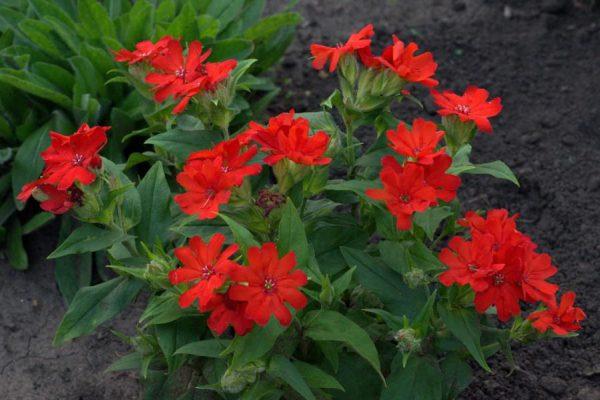
Cored
Likhnis Crowned grows up to 0.9 meters high. Inflorescences are friable, racemose, composed of pinkish flowers. Sometimes white buds are found.
Kukushkin
The variety grows along roads or along river banks. The variety is most resistant to excessive soil moisture. At the base of the stem is a dense rosette of short oval leaves. Above it is a mass of 90 cm high shoots. The top of the stems is branched, decorated with dense pinkish inflorescences. The diameter of each bud is 4 cm. The petals are thin, carved, painted in a pinkish tone.
The perennial blooms in late May.
Sparkling
Lichnis variety Sparkling grows up to 60 cm high. The inflorescences are rich red, 4-5 cm in diameter, the leaves are straight, rich green. Pollen falls in mid-July and lasts until the end of August. The variety bears fruit.
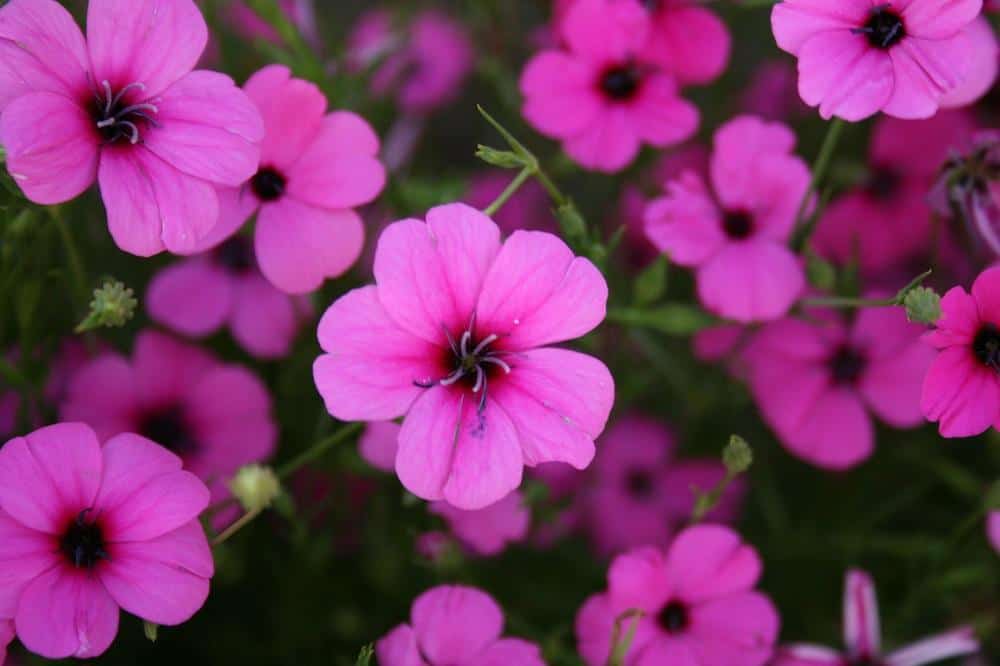
Haage
The height of the Haage perennial is 0.45 meters. The leaf plates are ovoid, oblong. Inflorescences racemose, 7-flowered, orange-scarlet. Their diameter is 50 mm. On each side of the petal there is 1 long narrow tooth. The plant shows high winter hardiness.
Chalcedony
Herbaceous perennial grows up to 1 meter high. The shape of the leaves is ovate-lanceolate, the diameter of the inflorescences is 10 cm. The petals are fiery red, 30 mm in diameter. The variety easily tolerates frost. It has been cultivated by gardeners since 1561. The people also call the variety "Dawn".

Jupiter
A variety of lychnis grows up to 0.8 meters high, branches are branched, densely leafy. There is pubescence on their surface. Lavender flowers, 30 mm in diameter. Allocate white-flowered and terry forms.
Rosetta
Lichnisa Rosetta is famous for its bright crimson double inflorescences. The bush grows up to 1 meter high. The stem is rough, the leaves are cordate, sharp, drooping. The buds are short, up to 2 cm in diameter, dark red.
Pollen is long lasting, lasts 1 month. If you periodically remove wilted inflorescences, it can be extended.
Terry Flore Pleno
Bushes grow up to 0.3 meters tall. Inflorescences racemose, composed of double flowers with a diameter of 30 mm. The shade of the buds is rich lavender. The leaves are narrow, deep green.
Angela Blanche
A perennial grows up to 60 cm in height. Shoots are ash-gray, hidden under rich green foliage. The buds are rich crimson. Pollen falls in mid-May and lasts until October.
Mysterious Island
The domestic variety of crown lychnis is famous for its pinkish buds; white edging is visible along the edges of the petals. The height of the bush is about 50 cm. The leaves and branches are rich emerald. Flowering occurs in mid-June, lasts until early September.

Nana
The variety grows up to 0.15 meters in height, the flowers are rich pink with lavender undertones. Their diameter is 10 cm. The petals are elongated, oblong, narrow.
Alba
The inflorescences are painted in a white shade, with a diameter of 10 cm. The height of the bush is about 80 cm. The foliage is a rich green hue.
Rosea Plena
The bush grows up to 70 cm tall, the leaves are emerald. Double flowers, pinkish tone.
Molten Love
Lychnis variety Molten Lava grows up to 25 cm tall, emerald-colored leaves. The shade of the inflorescences is deep red, the petals are small, with pointed edges, slightly twisted.
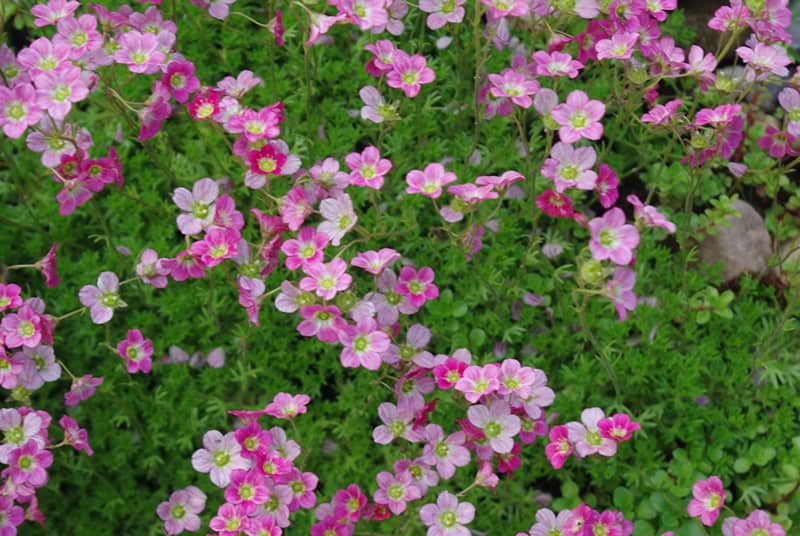
Maltese cross
Lychnis buds are bright red, inflorescences are small, up to 5 cm in diameter. The foliage is green, wide, the stem is strong. The bush grows up to 90 cm tall.
Lara
Likhnis Lara is famous for its lavender, small flowers up to 5 cm in diameter. Inflorescences are collected in a bud, petals are short, wavy at the edges. The height of the bush is on average 70 cm. The leaves are muted green, like the stem.
Vesuvius
The variety is distinguished by wide, heart-shaped leaves of a bright green tone and thick flowers. Their shade is deep red-orange, more fiery. Small inflorescences are collected in a bud. The stem and leaves are bright green. The height of the shrub is 40 cm.

Smolka
The bush grows up to 40 cm high, the leaves are light green. Pollen falls in May. Flowers are bright lavender, small, gathered in lilac-type buds.
Gibraltar
The Gibraltar Lychnis is the rarest variety. Inflorescences are pale white, small, of medium length. The stem and leaves are light green. The bush reaches a height of 80 cm.
Application in garden decoration
Lychnis is widely used for site decoration. Group plantings are good in the middle of a green lawn, next to water bodies. You can plant primroses, cornflowers, bells nearby. You can make a combination of different varieties of lychnis.
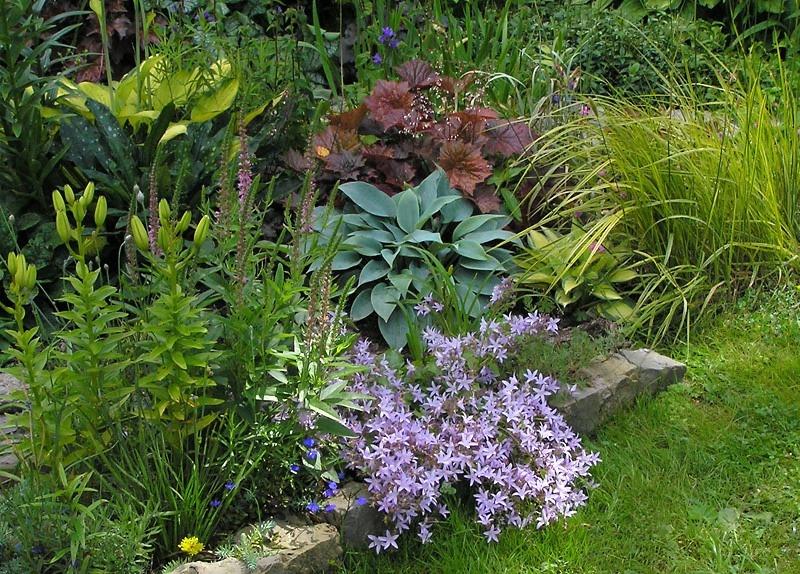
Reviews
The gardeners' responses to Lichnis are mostly positive. They will help you learn more about the plant.
Ilya Livanov, 70 years old, Moscow
Hello! I have been breeding the Lichnis Vesuvius plant since 2005. The bushes bloom all summer with beautiful flowers. The plant is unpretentious, I recommend it to everyone!
Oksana Zavalskaya, 66 years old, Kiev
Greetings to all! Likhnis Smolka planted 6 years ago. The plant bloomed in the second year, with the most beautiful lavender inflorescences. The garden is fragrant.
Natalia Rosenko, 48 years old, Sevastopol.
Hello! I have been breeding lychnis for over 10 years. Culture adorns the garden in the middle, planted dahlias nearby. Lichnis Molten Love and Alba grow in the garden. A couple of times the bushes were sick with aphids, but brought it out with vodka.
